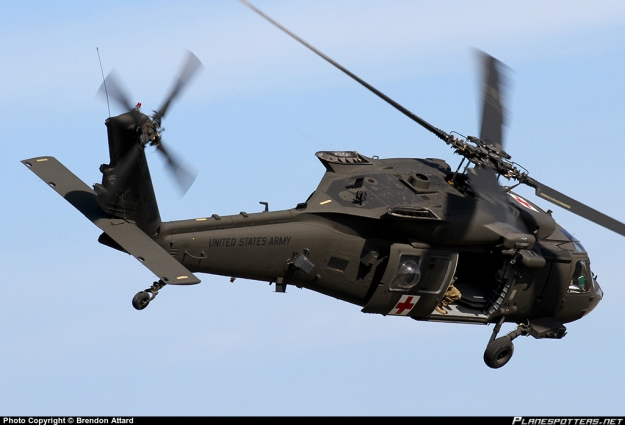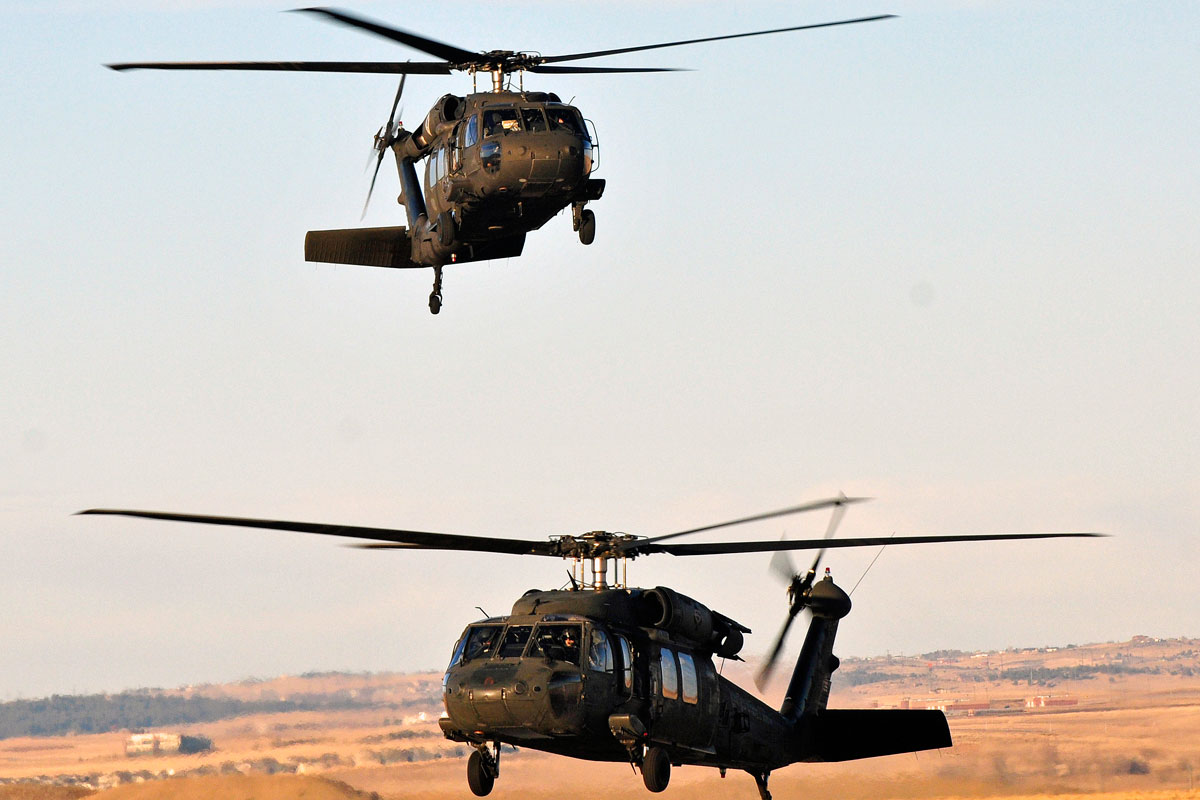Browsing Success: UH 60 Helicopter Maintenance Finest Practices
Browsing Success: UH 60 Helicopter Maintenance Finest Practices
Blog Article
Comprehending the Mechanics and Engineering Behind Uh 60 Helicopters
The UH-60 helicopter, generally called the Black Hawk, stands as a peak of modern-day rotorcraft technology, embodying a mix of durable engineering and elaborate technicians. From its beginning to its existing iterations, the development of this airplane showcases a fusion of development and practicality. As we peel back the layers of the UH-60's design, a globe of detailed systems and meticulous engineering emerges. Comprehending the mechanics and engineering behind this flexible airplane reveals a realm where accuracy fulfills power, and where each component plays an important duty in accomplishing trip.
History of UH-60 Helicopters
The background of UH-60 helicopters traces back to the late 1970s when the USA Army sought a versatile and advanced utility helicopter to change its aging fleet. In action to this requirement, the Sikorsky Airplane Firm developed the UH-60 Black Hawk helicopter. Presented in 1979, the UH-60 promptly ended up being a staple in military procedures as a result of its remarkable abilities.
The UH-60 was developed to master a range of goals, consisting of troop transportation, medical evacuation, digital war, and unique operations. Its capacity to adapt to various functions made it a beneficial property to the united state Army and various other military pressures around the world
Over the years, the UH-60 system has undertaken several upgrades and variants to boost its performance and equal evolving objective requirements. These helicopters have seen extensive solution in conflicts such as the Gulf War, Afghanistan, and Iraq, showcasing their integrity and adaptability in varied operational atmospheres. The UH-60's rich history is a testimony to its enduring tradition as a top utility helicopter.

Engine and Power Systems
Utilizing sophisticated propulsion modern technology, UH-60 helicopters are equipped with advanced engine and power systems to make certain optimum efficiency and dependability in an array of functional scenarios. The UH-60, frequently called the Black Hawk, is powered by 2 General Electric T700-GE-701D engines, each with the ability of delivering up to 1,940 shaft horsepower. These turboshaft engines offer the required thrust for the helicopter to accomplish its missions properly, consisting of troop transport, medical discharge, and fight support.

Blades System and Aerodynamics
Exactly how do the rotor system and aerodynamics of UH-60 helicopters add to their operational efficiency and flight abilities? The rotor system of the UH-60 helicopter plays a vital duty in giving lift and propulsion. The UH-60 includes a four-bladed, completely verbalized rotor system that permits high maneuverability and stability during trip. This design allows the helicopter to carry out a vast array of missions, from transportation and medical emptying to deal with operations.
The rules of aerodynamics additionally play a key duty in the efficiency of UH-60 helicopters. The streamlined body and blades blade design minimize drag, enabling the helicopter to accomplish greater rates and better gas efficiency. The wind resistant style of the UH-60 additionally adds to its capability to run in varied ecological conditions, including high altitudes and warm temperatures.
Avionics and Trip Control Equipment

In its complex control with the blades system and the rules of aerodynamics of UH-60 helicopters, the avionics and flight control systems create an important network of modern technologies shaping the aircraft's operational capacities. Avionics incorporate the electronic systems made use of for communication, navigation, about his and keeping an eye on different airplane functions. In the UH-60, these systems consist of electronic display screens, interaction radios, GPS navigating, climate radar, and auto-pilot systems. These avionics systems provide critical info to the pilots, improving situational understanding and ensuring risk-free and effective operation of the helicopter.
The flight control systems of the UH-60 are in charge of equating the pilot's inputs right into the ideal adjustments to the rotor system, guaranteeing stable flight and ability to move. These systems include hydraulic actuators, servos, and computers that function together to control the tail and major blades, as well as other trip control surface areas. By precisely managing the helicopter's trip dynamics, these systems enable pilots to perform a wide variety of objectives, from transport and search-and-rescue to battle procedures, with precision and self-confidence.
Function and Applications in Air Travel
The function and applications of avionics and trip control systems in aeronautics are essential to ensuring the risk-free and efficient procedure of airplane, including UH-60 helicopters. Avionics systems in UH-60 helicopters encompass a series of digital systems that help in navigating, interaction, surveillance, and managing different aircraft features. These systems consist of electronic displays, autopilot systems, communication radios, general practitioner navigation equipment, and weather radar. Trip control systems play an important function in maneuvering the helicopter airborne, keeping security, and making certain exact motions. The fly-by-wire technology utilized in contemporary UH-60 helicopters translates pilot inputs right into digital signals, which are then analyzed by the flight control computers to adjust the airplane's control surfaces. In addition, these systems integrate safety functions such as autopilot modes, surface awareness advising systems, and stability enhancement systems to boost the general safety and functional abilities of the UH-60 helicopters in various missions, including army transportation, medical discharge, search and rescue, and aerial firefighting.
Verdict
Finally, the UH-60 helicopter is a versatile aircraft with an abundant background and progressed engineering. Its engine and power systems, rotor system, the rules of aerodynamics, avionics, and flight control systems all function with each other to make it a trustworthy and reliable device. The UH-60's duty and applications in aeronautics are vast, ranging from military operations to browse and rescue missions. Its continued advancement and use demonstrate its value in the area of air travel (uh 60).
In its intricate coordination with the blades system and the rules of aerodynamics of UH-60 helicopters, the avionics and trip control systems develop an essential network of technologies shaping the airplane's functional abilities.The flight control systems of the UH-60 are liable for equating the pilot's inputs right into the ideal adjustments to the blades system, making sure secure flight and maneuverability. Avionics systems in UH-60 helicopters encompass a range of digital systems that help in navigating, communication, monitoring, and great post to read controlling different airplane functions. Additionally, these systems include security functions such as autopilot modes, terrain recognition alerting systems, site and stability augmentation systems to boost the general safety and operational capabilities of the UH-60 helicopters in numerous objectives, including army transportation, clinical evacuation, search and rescue, and airborne firefighting.
Its engine and power systems, rotor system, aerodynamics, avionics, and trip control systems all work together to make it a reputable and efficient machine.
Report this page